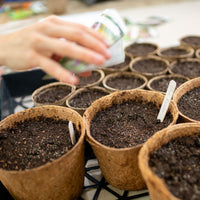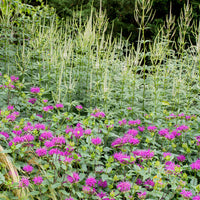SOWING INSTRUCTIONS
Depth:
Surface sow and lightly press in.
Sprout Time:
10-30 days from end of chilling period
Starting Indoors:
Stratify for 30-60 days. Sow in a container, cover with a plastic bag and refrigerate, or mix seed with damp clean sand or vermiculite, bag, and refrigerate at 35-40°F. Check often for germination and maintain a lightly moist medium. Transplant any seedlings as they germinate. After the chill period, sow into soilless media and keep at 60-65°F.
Starting Outdoors:
Direct sow in fall to early spring into prepared bed or winter sow into pots in the shade, covered with a thin layer of clean sand and a wire screen to keep out mice and voles. Check for water, keeping evenly moist.
PLACEMENT & CULTIVATION
Rudbeckia triloba, also known as branched coneflower, is a widespread native wildflower that is a beautiful addition to borders and meadow plantings, where its small gold daisy flowers held on mahogany stems weave in and out among other summer and fall-blooming perennials. Excellent for bird-friendly gardens, it draws many birds, including goldfinches, to the seeds in fall. Deadhead or cut for bouquets. A biennial to a short-lived perennial that self-sows for a continual presence in hospitable gardens.
Watering Details:
1" a week. Tolerates some drought once established.
Soil pH:
Prefers neutral but will tolerate slightly acidic to slightly alkaline
Fertilizer:
Mix in about 2" of compost before planting, and top dress with an additional inch each spring.
Diseases & Pests:
Avoid fungal troubles with proper spacing and plant in a location with good air circulation.
When to Cut for Bouquets:
Harvest when flowers are fully open.











































